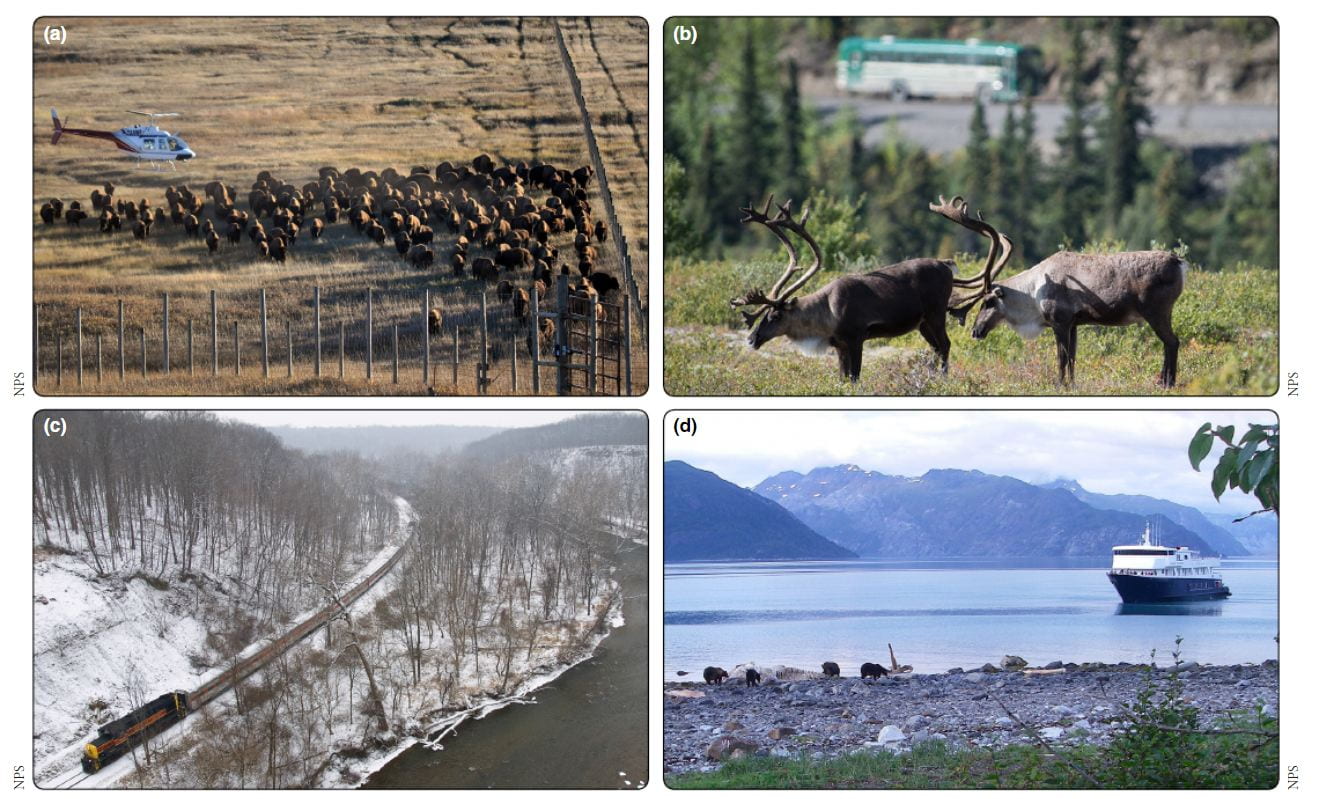Imagine this. You are getting weary from the hustle and bustle of the city life. The din of the vehicles, the commotion of urban dwellers, the incessant pounding of jackhammers in construction sites. You are longing for a quiet respite, perhaps somewhere in the woods, where you can finally take a breather and escape from the city noise. So you make your way to a national park, where the sound of nature is so subtle that they’re almost imperceptible. But every now and then, the sound of a jet flying overhead shatters the fragile calm. You’re in the wilderness, in the middle of nowhere, yet you still can’t fully escape anthropogenic noise.
The pervasiveness of noise pollution in National Parks
That’s the problem with noise pollution. It doesn’t have any boundaries, and it pervades the wilderness areas across the country. According to a study by Buxton et al. (2019) where thousands of hours of acoustic recordings were collected across various national parks in the U.S. and subsequently analyzed, anthropogenic noise was audible in 37% of the recordings. The study also found that parks with high road density and those in close proximity to large airports are more vulnerable to noise events, as the most common noise sources were aircraft and road vehicles.

Some examples of anthropogenic noise sources in US national parks include (a) aircraft (Theodore Roosevelt National Park, North Dakota), (b) vehicles (Denali National Park and Preserve, Alaska), (c) trains (Cuyahoga Valley National Park, Ohio), and (d) watercraft (Glacier Bay National Park, Alaska). Graphics from Buxton et al. (2019)
Another study by Iglesias Merchan, Diaz-Balteiro and Soliño (2014), which was done to evaluate the soundscape in a protected natural area, found that there was a noticeable soundscape degradation during visitors’ leisure experience, where sound pressure levels increased approximately 4.5 dB from natural ambient levels. Soundscape, a term that was first defined as the “acoustic footprint of a landscape”, refers to the collection of sounds that emanate from landscapes and reflect ecosystem processes and human activities over space and time. While repetitive events such as overflights or accelerating vehicles are able to cause a very significant environmental impact on the natural soundscape, the study found that human shouts or loud voices are also particularly significant, and loud talking is a good indicator of quality that detracts from the visitor experience, thereby becoming an issue for park management to consider.
Is it a cause for concern?
According to the World Health Organization (WHO) and the European Centre for Environment and Health (2011), unwanted or disturbing sounds (noise) may not only be a harmful pollutant to human health, but may also become a global and growing matter of concern threatening the preservation of natural areas, due to various reasons such as wildlife disturbance, ecosystems degradation and biodiversity loss. Additionally, natural soundscape loss or degradation may also have a substantial impact on aesthetic and affective visitors’ experiences, representing a depletion of ecosystem services linked to people’s psychological well-being in areas of pre-supposed environmental quality, as highlighted in Mace, Bell and Loomis (2004).
In the next post, I will be discussing more on the impacts of noise pollution in national parks on both the environment, as well as human health.
Till next time,
Irsyad
——————
References:
Buxton, R., McKenna, M., Mennitt, D., Brown, E., Fristrup, K., Crooks, K., Angeloni, L. and Wittemyer, G., 2019. Anthropogenic noise in US national parks – sources and spatial extent. Frontiers in Ecology and the Environment, 17(10), pp.559-564.
Iglesias Merchan, C., Diaz-Balteiro, L. and Soliño, M., 2014. Noise pollution in national parks: Soundscape and economic valuation. Landscape and Urban Planning, 123, pp.1-9.
Mace, B., Bell, P. and Loomis, R., 2004. Visibility and Natural Quiet in National Parks and Wilderness Areas. Environment and Behavior, 36(1), pp.5-31.
World Health Organization European Centre for Environment and Health, 2011. Burden Of Disease From Environmental Noise – Quantification Of Healthy Life Years Lost In Europe. [online] Copenhagen: World Health Organization. Available at: <https://www.who.int/quantifying_ehimpacts/publications/e94888.pdf?ua=1>